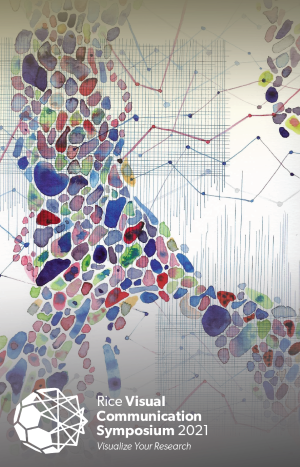VCS 2021 at a glance
Thursday, March 4

9:15 a.m. Welcome remarks
9:30 a.m. Interactive Data Analysis: Visualization and Beyond
Jeff Heer
Data analysis is a complex process with frequent shifts among data formats, tools, and models, as well as between symbolic and visual thinking. How might the design of improved tools accelerate people's exploration and understanding of data? Covering both interactive demos and principles from academic research, this talk will examine how to craft a careful balance of interactive and automated methods, combining concepts from data visualization, machine learning, and computer systems to design novel interactive analysis tools.
10:30 a.m. Coffee break
11:00 a.m. “Can we break the scale...?”
Sarah Leo
Every week, The Economist publishes about 40 charts in its print and online editions. Often, readers will be unfamiliar with the topics, and the statistics might be new to them. Dr. Leo’s job is to make sure that all readers, regardless of their data literacy, have the best chance of understanding every chart. Dr. Leo will walk attendees through the making of an Economist chart and the way the data journalists think about the visualizations. She will present lessons learned from problematic visualizations as well as analyze the visual devices used in some of the magazine’s most successful visualizations. The goal of the session is to help attendees understand how to turn their own charts into well-designed and easy-to-understand data visualizations.
12:00-1:00 p.m. Lunch break and networking on Whova
1:00-4:00 p.m. Workshop: Shiny
Vivian Peng
This workshop is an introduction to data visualization and building dashboards with R Shiny. Through case studies and hands-on examples, we will explore how to frame research interests for data exploration, communication, and building tools to help with decision-making. Participants will start with the basics for design thinking and learn how to identify their target audience, prototype, and approach visualization. Next, participants will cover the building blocks of Shiny dashboard development–the setup, how to load in their own data, using Shiny widgets, UI layout design, reactivity, and deploying to Shinyapps.io.
1:30-2:30 p.m. Q&A with Sarah Leo
For those not attending the workshop, feel free to stop by this hour-long chat with Sarah to learn more about her work at The Economist and as a data journalist.
Friday, March 5
8:30 a.m. Networking on Whova
9:30 a.m. Visual Data Communication, Fast and Slow
Steven Franconeri
A well-designed visualization allows your audience to immediately see how your data support your argument, while a poorly designed one creates delays and confusion. We'll review how good design leads to effective visual processing, through interactive demonstrations of your visual capacity limits. We'll also review how design choices and motivated cognition can bias which patterns different viewers extract from visualizations.
10:30 a.m. Coffee break
11:00 a.m. Storytelling Through Animation in the Digital Age
Alice Kitterman
Social media and the blazing advances in digital technology have ushered in a new era for the visual media world. Designing a visual with a cohesive message that doesn’t sacrifice aesthetic and will be used in a myriad of media products has become crucial to maximizing the impact of that visual. The appeal of animation is the added dimension of movement, an inherent “attention-grabbing” property. In this talk, Ms. Kitterman will first touch upon the parallels between storytelling and the research writing process, using the research paper as a starting point to build a clear and concise “visual abstract.” Then, she will take attendees through her process from illustration to animation, in order to demonstrate how she accomplishes this process without sacrificing conceptual clarity.
12:00 p.m. Closing remarks
12:15-1:30 p.m. Lunch break and networking on Whova
1:30-4:30 p.m. Workshop: Advanced Data Visualization in ggplot2
Allison Horst
In this workshop, Dr. Horst will cover concepts and skills to create effective, elegant data visualizations with ggplot2 in R. Participants will start by reviewing, then building on, ggplot basics to make highly customized figures (including scales, guides, themes, direct labeling, and highlighting) while reinforcing data visualization principles by carefully considering why we update (or don’t update) each graph component. Next, participants will learn how to make several elegant and modern (but less commonly seen) graph types before putting them together into a compound figure using the {patchwork} package. To wrap up, participants will construct a beautiful map in ggplot to reinforce how the tools and concepts are transferable across different data and visualization types.
